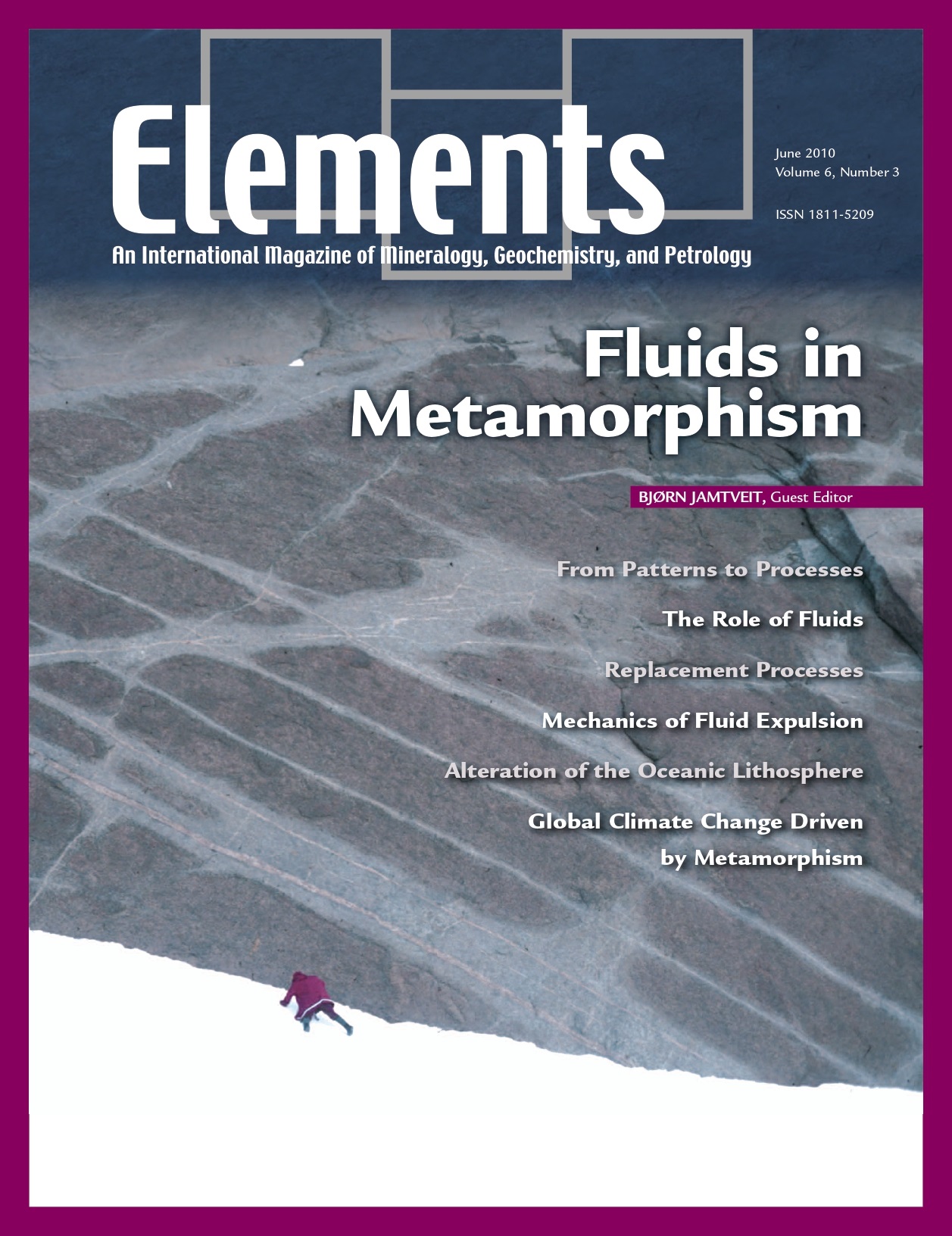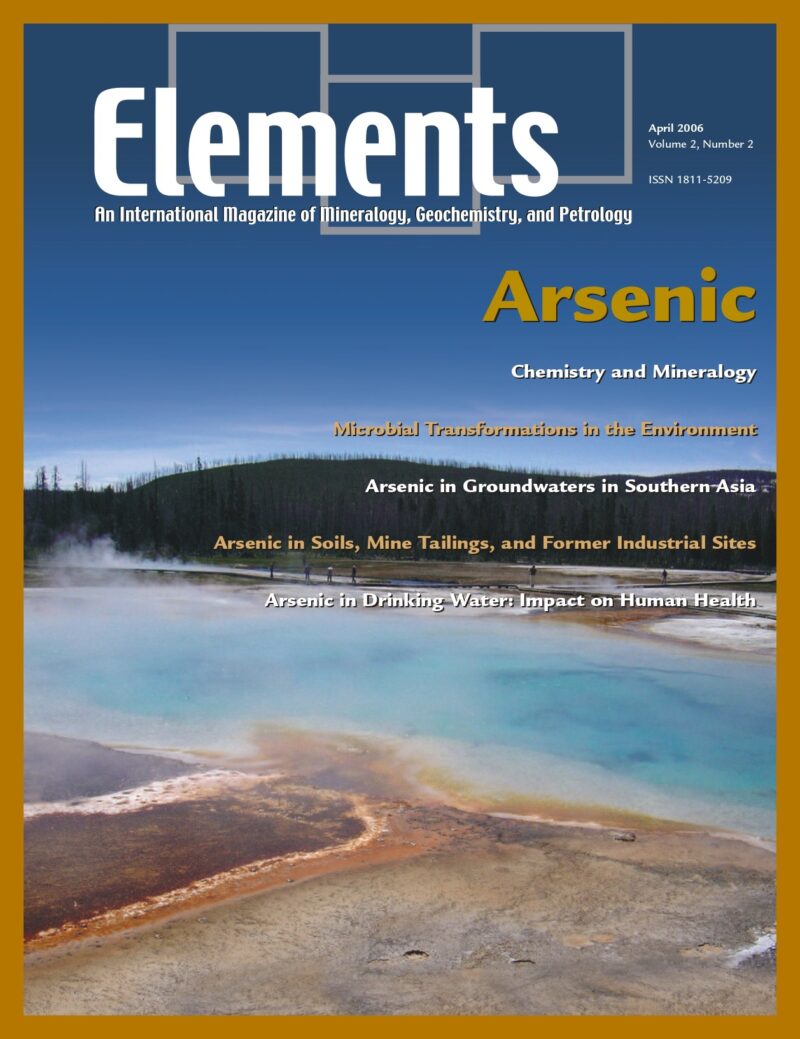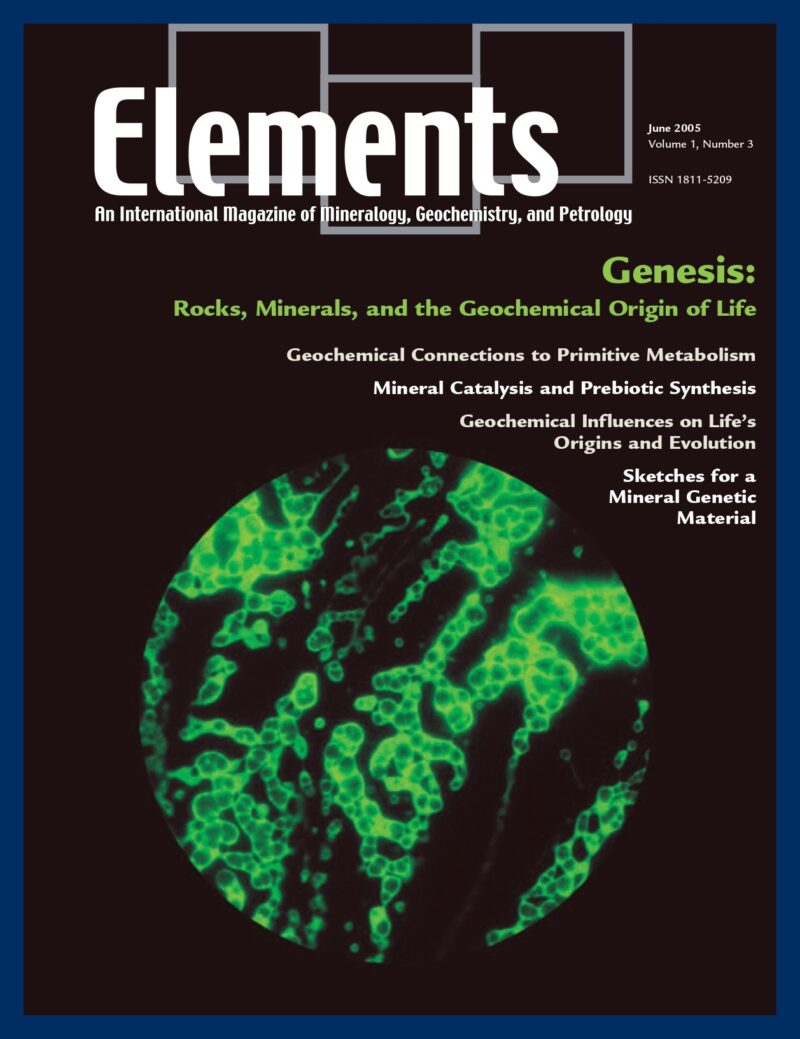
Bentonites – Versatile Clays, April 2009, Vol. 5, No. 2
June 28, 2024
Cosmochemistry, February 2011, Vol. 7, No. 1
June 28, 2024Fluids In Metamorphism, June 2010, Vol. 6, No. 3
$20.00
Fluids play a critical role during metamorphic processes. They have first-order influence on both reaction kinetics and mass transfer, and thus also on the rate of metamorphism.
Fluids In Metamorphism
June 2010, Vol. 6, No. 3
Fluids play a critical role during metamorphic processes. They have first-order influence on both reaction kinetics and mass transfer, and thus also on the rate of metamorphism. “Volatile components,” such as H2O and CO2, may strongly influence rock rheology even in the absence of a free fluid phase. Metamorphic fluids therefore control the coupling between chemical reactions, mass transport, and deformation. Microstructures, compositional gradients at various scales, and larger-scale deformation features all reflect the dynamics of fluid–rock interactions. Moreover, the migration of fluids produced during prograde metamorphic processes or consumed during retrogression links metamorphism with the hydrosphere, the atmosphere, and the biosphere. This issue sheds light on the origin of the various patterns that emerge in metamorphic rocks as a response to changes in pressure, temperature, and the composition of pore-filling fluid. By following the metamorphic fluids to or from the Earth’s surface, we also aim to explain how metamorphism may affect our own environment.
Why You’ll Love Elements Magazine:
- Expert Contributors: Articles written by renowned researchers in the field of geoscience.
- Engaging Content: Join a community of readers who are passionate about Elements.
- Exceptional Quality: Each issue is printed on high-quality paper with stunning visuals and detailed illustrations that bring complex scientific concepts to life.
Order your copy of the June 2010 issue of Elements magazine today and find out about fluids in metamorphism.
Related products
-
Arsenic, April 2006, Vol. 2, No. 2
$20.00Arsenic is an element known throughout history as a classic poison. Currently, very small but highly significant concentrations of this element in drinking water supplies are causing massive health problems to many millions of people in some of the world’s poorest nations, and more localised sources related to mining and processing are also a concern.
-
Genesis: Rocks, Minerals, And The Geochemical Origin Of Life, June 2005, Vol. 1, No. 3
$20.00Few scientific questions so capture the public imagination, or provoke such lively debate, as how life on Earth emerged. In this issue of Elements, four of the most creative minds in origins research present their original insights on the geochemical origins of life.
-
Phosphates And Global Sustainability, April 2008, Vol. 4, No. 2
$20.00Phosphorus is a unique element: it is essential to the existence of all living forms, and as such controls biological productivity in many terrestrial and marine environments; but when in excess, it leads to uncontrollable biological growth and water-quality problems. This has become a common environmental issue, resulting from our careless use of phosphorus in agriculture, yet phosphate ore deposits, from which fertilizers are produced, are a finite natural resource.




